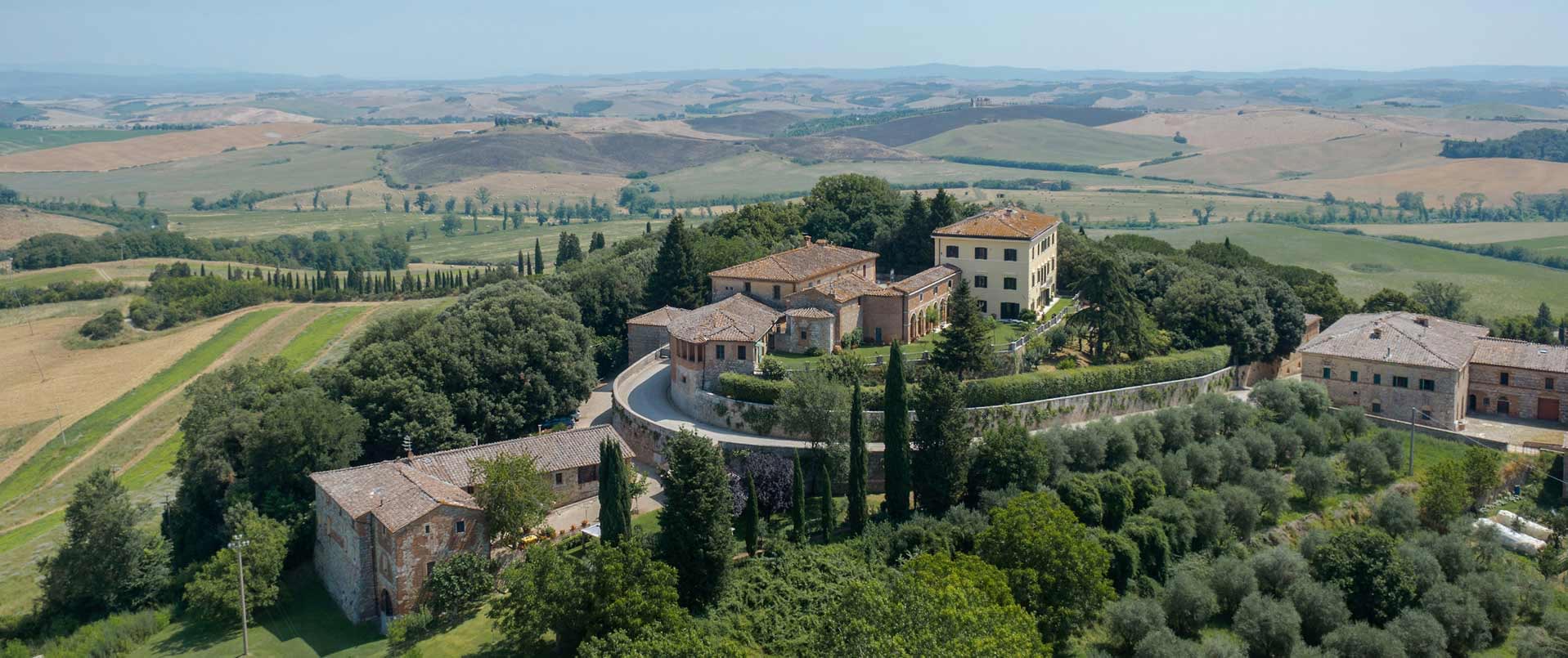
The place name ‘Panzo’ derives from the Latin name ‘Pantius’, while the name of the monastery, Sant’Angelo in Panzo, comes from a church dedicated to the worship of Saint Michael the Archangel, built on land belonging to an owner with that name.
The existing convent, located approximately two kilometres outside Assisi, on the slopes of Mount Subasio, was built around the 10th century on the ruins of a Roman settlement. Some Latin inscriptions, relating to the ‘gens Propertia’ (Propertius was from Assisi) were found in the foundations of the primitive church.
In the early 1200s, Sant’Angelo in Panzo was a monastery when Saint Francis, Friar Filippo and Friar Bernardo accompanied Saint Clare, who had recently fled her home, to the safe haven in March 1212. Saint Clare was then joined by her sister, Saint Agnes, and the family, irritated, sent their uncle Monaldo to bring her back home, even by force. The legend tells of Saint Clare’s first miracle when Saint Agnes’s body became so heavy that it could not be lifted, while her uncle’s arm, which he had raised to strike her, remained completely paralysed.
Saint Clare later moved to San Damiano and Panzo became an important Clarian Sisters monastery until approximately one century later, when, for security reasons, they moved inside the city walls of Assisi, as did many other settlements around the city at that time.
Sant’Angelo in Panzo was thus reduced to a semi-abandoned hermitage until the beginning of the 1600s when it was purchased by the Bonacquisti family, an important family from Assisi, who restored it and transformed it into a palazzo. They also rebuilt the old convent church, as evidenced by an inscription inside.
The Bonacquisti family became extinct at the end of the 1800s, and for some time the building was used as a farmhouse until 1950, when the current owners restored it.
Sant’Angelo in Panzo is also known for its spring, which has provided water to Assisi since Roman times through tunnels carved into the rock that are still partially visible today and that extended all the way into the city.
The olive grove surrounding the ancient residence is known for the excellent quality of its organic and pdo olive oil.
A historically listed residence, it is considered one of the most interesting estates in Umbria and certainly the only one in Assisi, a city known worldwide and visited yearly by millions of tourists as well as by secular and religious elites. Even though not open to the public, Panzo always welcomes those who wish to visit the chapel and the walls of Saint Clare.
Every room is prestigiously furnished and the library contains over six thousand books.
Facilities and services: weddings and private events in Assisi
Villa Sant’Angelo in Panzo and its private church, where legend has it that Saint Clare performed her first miracle, are both steeped in history, and an ideal location for weddings, private ceremonies and cultural events.
It is also possible to organise tasting sessions of the olive oil and direct sales of the products.
 Co-Working
Co-Working
 Film sets
Film sets
 Gardens
Gardens
 Private events
Private events
 Residences
Residences
 Spirituality
Spirituality
 Visits
Visits
 Weddings
Weddings
 Gardens
Gardens  Nature
Nature  Walking itineraries
Walking itineraries  Wine tourism
Wine tourism